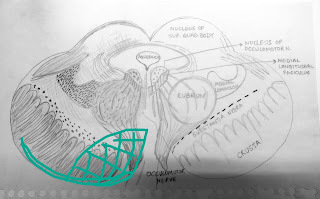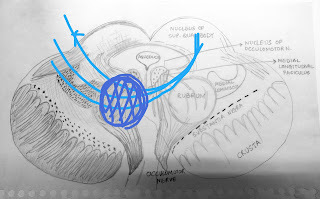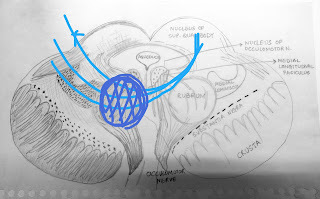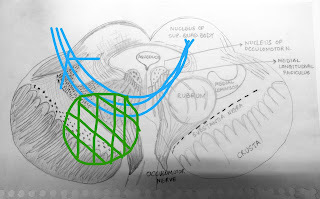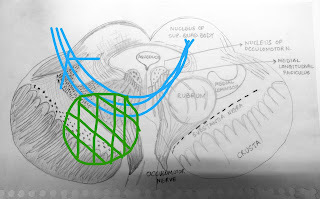Edited, memorised or added to reading queue
on 03-Dec-2021 (Fri)
Do you want BuboFlash to help you learning these things? Click here to log in or create user.
Flashcard 6991694662924
| status | not learned | measured difficulty | 37% [default] | last interval [days] | |||
|---|---|---|---|---|---|---|---|
| repetition number in this series | 0 | memorised on | scheduled repetition | ||||
| scheduled repetition interval | last repetition or drill |
Flashcard 6991700167948
| status | not learned | measured difficulty | 37% [default] | last interval [days] | |||
|---|---|---|---|---|---|---|---|
| repetition number in this series | 0 | memorised on | scheduled repetition | ||||
| scheduled repetition interval | last repetition or drill |
Flashcard 6991702265100
| status | not learned | measured difficulty | 37% [default] | last interval [days] | |||
|---|---|---|---|---|---|---|---|
| repetition number in this series | 0 | memorised on | scheduled repetition | ||||
| scheduled repetition interval | last repetition or drill |
Flashcard 6991710653708
| status | not learned | measured difficulty | 37% [default] | last interval [days] | |||
|---|---|---|---|---|---|---|---|
| repetition number in this series | 0 | memorised on | scheduled repetition | ||||
| scheduled repetition interval | last repetition or drill |
Flashcard 6991711702284
| status | not learned | measured difficulty | 37% [default] | last interval [days] | |||
|---|---|---|---|---|---|---|---|
| repetition number in this series | 0 | memorised on | scheduled repetition | ||||
| scheduled repetition interval | last repetition or drill |
| status | not read | reprioritisations | ||
|---|---|---|---|---|
| last reprioritisation on | suggested re-reading day | |||
| started reading on | finished reading on |
Flashcard 6991725071628
| status | not learned | measured difficulty | 37% [default] | last interval [days] | |||
|---|---|---|---|---|---|---|---|
| repetition number in this series | 0 | memorised on | scheduled repetition | ||||
| scheduled repetition interval | last repetition or drill |
| status | not read | reprioritisations | ||
|---|---|---|---|---|
| last reprioritisation on | suggested re-reading day | |||
| started reading on | finished reading on |
University of the People: Log in to the site
ة متميزة عالمية Academic leadership from Harvard, UC Berkeley and more Making the Impossible Possible لنجعل المستحيل ممكناً Study online, anytime, anywhere Previous Next Home: Dashboard Message <span>Welcome to the online campus of University of the People. Here you can access all your courses and find helpful information and resources. Skip Course overview Course overview In progress All (except removed from view) In progress Future Past
| status | not read | reprioritisations | ||
|---|---|---|---|---|
| last reprioritisation on | suggested re-reading day | |||
| started reading on | finished reading on |
University of the People: Log in to the site
ة متميزة عالمية Academic leadership from Harvard, UC Berkeley and more Making the Impossible Possible لنجعل المستحيل ممكناً Study online, anytime, anywhere Previous Next Home: Dashboard Message <span>Welcome to the online campus of University of the People. Here you can access all your courses and find helpful information and resources. Skip Course overview Course overview In progress All (except removed from view) In progress Future Past
| status | not read | reprioritisations | ||
|---|---|---|---|---|
| last reprioritisation on | suggested re-reading day | |||
| started reading on | finished reading on |
University of the People: Log in to the site
s.net/ESL.English.Listening.Short.Stories/Monsieur.Rose/01/default.html There is an optional handout on medium-level verb conjugations here: Learning English Online. (n.d.). PDF Video Resources <span>Imsdunick. (2014, January 29). Topic sentences vs. thesis statements [Video]. Youtube. Deerwalk Institute of Technology. (2016, August 11). How to write a five paragraph essay [Video]. YouTube. Skip Table of contents Table of contents Overview Introduction Reading Assignm
| status | not read | reprioritisations | ||
|---|---|---|---|---|
| last reprioritisation on | suggested re-reading day | |||
| started reading on | finished reading on |
Flashcard 6991741586700
| status | not learned | measured difficulty | 37% [default] | last interval [days] | |||
|---|---|---|---|---|---|---|---|
| repetition number in this series | 0 | memorised on | scheduled repetition | ||||
| scheduled repetition interval | last repetition or drill |
| status | not read | reprioritisations | ||
|---|---|---|---|---|
| last reprioritisation on | suggested re-reading day | |||
| started reading on | finished reading on |
Flashcard 6991753383180
| status | not learned | measured difficulty | 37% [default] | last interval [days] | |||
|---|---|---|---|---|---|---|---|
| repetition number in this series | 0 | memorised on | scheduled repetition | ||||
| scheduled repetition interval | last repetition or drill |
Parent (intermediate) annotation
Open itsome of the symptoms point towards nom union • Persistent pain • Pain on stressing the fracture • Mobility (in non-union) • Increasing deformity at the fracture site (in non- union)
Original toplevel document (pdf)
cannot see any pdfsFlashcard 6991755218188
| status | not learned | measured difficulty | 37% [default] | last interval [days] | |||
|---|---|---|---|---|---|---|---|
| repetition number in this series | 0 | memorised on | scheduled repetition | ||||
| scheduled repetition interval | last repetition or drill |
| status | not read | reprioritisations | ||
|---|---|---|---|---|
| last reprioritisation on | suggested re-reading day | |||
| started reading on | finished reading on |
| status | not read | reprioritisations | ||
|---|---|---|---|---|
| last reprioritisation on | suggested re-reading day | |||
| started reading on | finished reading on |
Flashcard 6991764393228
| status | not learned | measured difficulty | 37% [default] | last interval [days] | |||
|---|---|---|---|---|---|---|---|
| repetition number in this series | 0 | memorised on | scheduled repetition | ||||
| scheduled repetition interval | last repetition or drill |
Parent (intermediate) annotation
Open itTreatment of non-union depends upon the site of non-union and the disability caused by it. The following possibilities of treatment should be considered, depending upon the individual cases. • <span>Open reduction, internal fixation and bone grafting: This is the commonest operation performed for non-union. The grafts are taken from iliac crest. Internal fixation is required in most cases. • Excision of fragments: Sometimes, achievi
Original toplevel document (pdf)
cannot see any pdfsFlashcard 6991766228236
| status | not learned | measured difficulty | 37% [default] | last interval [days] | |||
|---|---|---|---|---|---|---|---|
| repetition number in this series | 0 | memorised on | scheduled repetition | ||||
| scheduled repetition interval | last repetition or drill |
Parent (intermediate) annotation
Open iten reduction, internal fixation and bone grafting: This is the commonest operation performed for non-union. The grafts are taken from iliac crest. Internal fixation is required in most cases. • <span>Excision of fragments: Sometimes, achieving union is difficult and time consuming compared to excision of one of the fragments. This can only be done where excision of the fragment will not cause any loss of
Original toplevel document (pdf)
cannot see any pdfs| status | not read | reprioritisations | ||
|---|---|---|---|---|
| last reprioritisation on | suggested re-reading day | |||
| started reading on | finished reading on |
Parent (intermediate) annotation
Open itmetimes, achieving union is difficult and time consuming compared to excision of one of the fragments. This can only be done where excision of the fragment will not cause any loss of functions. <span>An excision may or may not need to be combined with replacement with an artificial mould (prosthesis). For example, the lower-end of the ulna can be excised for non-union of the fracture of the distal-end of the ulna without much loss. In non-union of fracture of the neck of femur in an elderly, the head of the femur can be replaced by a prosthesis (replacement arthroplasty) . • No treatment: Some non-unions do not give rise to any symptoms, and hence require no treatment, e.g., some non-unions of the fracture scaphoid. • Ilizarov’s method: Prof. Ilizarov f
Original toplevel document (pdf)
cannot see any pdfs| status | not read | reprioritisations | ||
|---|---|---|---|---|
| last reprioritisation on | suggested re-reading day | |||
| started reading on | finished reading on |
Flashcard 6991776189708
| status | not learned | measured difficulty | 37% [default] | last interval [days] | |||
|---|---|---|---|---|---|---|---|
| repetition number in this series | 0 | memorised on | scheduled repetition | ||||
| scheduled repetition interval | last repetition or drill |
Parent (intermediate) annotation
Open itWhen a fracture does not unite in proper position, it is said to have malunited. A slight degree of malunion occurs in a large proportion of fractures, but in practice the term is reserved for cases where the resulting disability is of clinical significance. Causes:
Original toplevel document (pdf)
cannot see any pdfsFlashcard 6991778024716
| status | not learned | measured difficulty | 37% [default] | last interval [days] | |||
|---|---|---|---|---|---|---|---|
| repetition number in this series | 0 | memorised on | scheduled repetition | ||||
| scheduled repetition interval | last repetition or drill |
Parent (intermediate) annotation
Open itunited. A slight degree of malunion occurs in a large proportion of fractures, but in practice the term is reserved for cases where the resulting disability is of clinical significance. Causes: <span>Improper treatment is the commonest cause. Malunion is therefore preventable in most cases by keeping a close watch on position of the fracture during treatment. Sometimes, malunion is inevitable because of unchecked muscle pull (e.g., fracture of the clavicle), or excessive comminution (e.g., Colles’ fracture). Common sites: Fractures at the ends of a bone always unite, but they often malunite e.g., supracondylar fracture of the humerus, Colles’ fracture etc. <span>
Original toplevel document (pdf)
cannot see any pdfsFlashcard 6991780121868
| status | not learned | measured difficulty | 37% [default] | last interval [days] | |||
|---|---|---|---|---|---|---|---|
| repetition number in this series | 0 | memorised on | scheduled repetition | ||||
| scheduled repetition interval | last repetition or drill |
